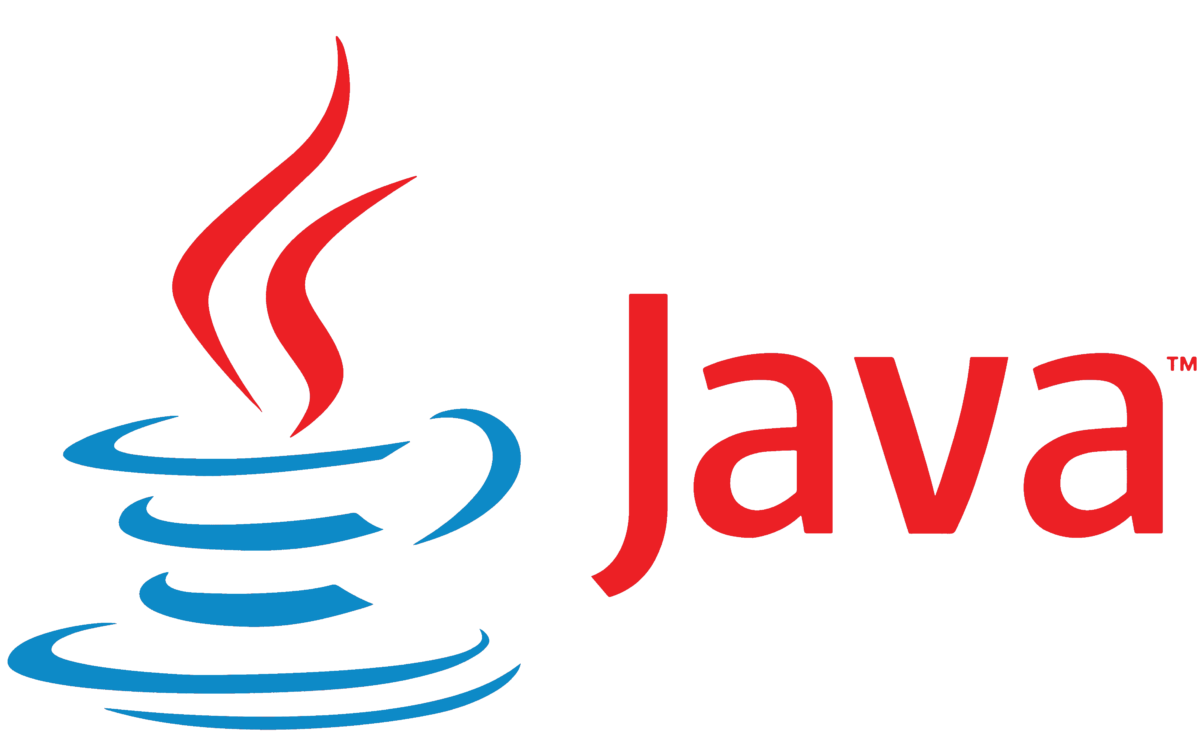
What is Garbage Collection in Java?
 Natan Ferreira
Natan Ferreira- 0
- 104
It is a process that manages memory in software written in Java. When running programs on the JVM (Java Virtual Machine), objects are created in the Heap memory. When these objects are no longer needed, the Garbage Collector will find unused objects and remove them from memory, helping to prevent memory leaks.

We need to understand that there is the Call Stack, Stack Memory, and Heap Memory.
Call Stack, Stack Memory and Heap Memory
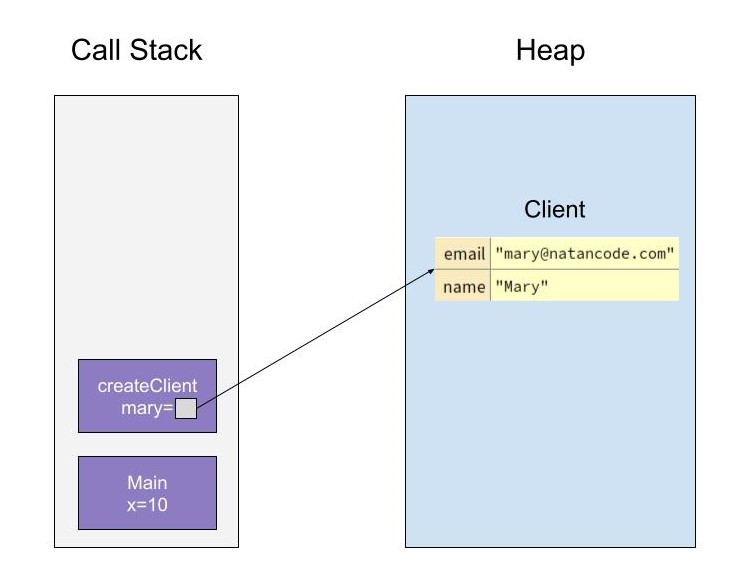
There is Stack Memory and Heap Memory. Stack Memory contains the Call Stack.
Each method that is executing resides in the call stack.
The variables mary and x are in the stack memory.
The variable mary was created in the stack memory and holds a value that is a reference to an object located in the heap memory.
In the case of the variable x, its value is stored in the stack memory.
Example

I created the Client class.
public class Client {
private String name;
private String email;
public Client(String name, String email) {
this.name = name;
this.email = email;
}
public String getName() {
return name;
}
public void setName(String name) {
this.name = name;
}
public String getEmail() {
return email;
}
public void setEmail(String email) {
this.email = email;
}
}
Main class.
public class Main {
public static void main(String[] args) {
int x = 10;
createClient();
}
static void createClient() {
Client mary = new Client("Mary", "mary@natancode.com");
System.out.println(mary);
}
}When running the main method, it will be on the call stack. Let’s debug to see step by step what happens.
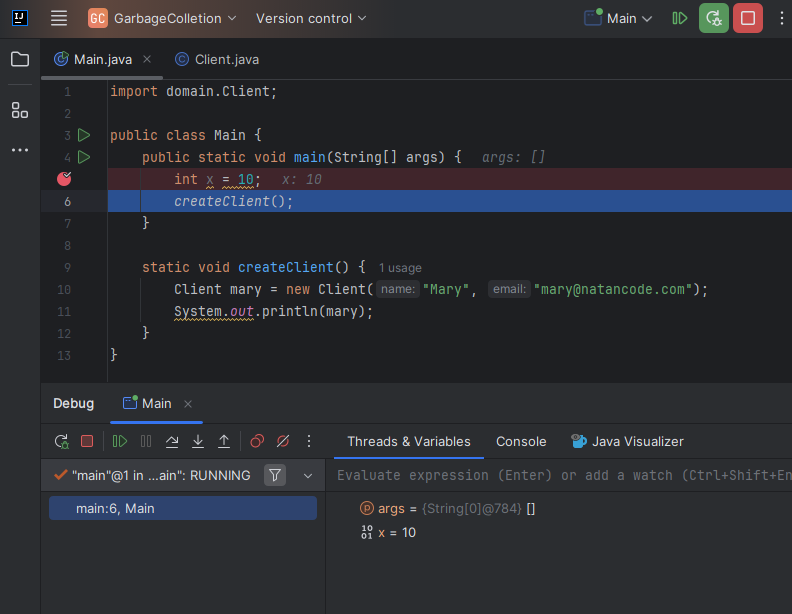
In the image above, we executed line 5, and the program is paused at line 6.
On the left side, we see the main method running, and on the right side, the variable x with the value 10. This means that in the call stack area, we have the main method call and the variable x along with its value in the stack memory. Next, we’ll see what happens when the createClient() method is called.
We have another method in the call stack.
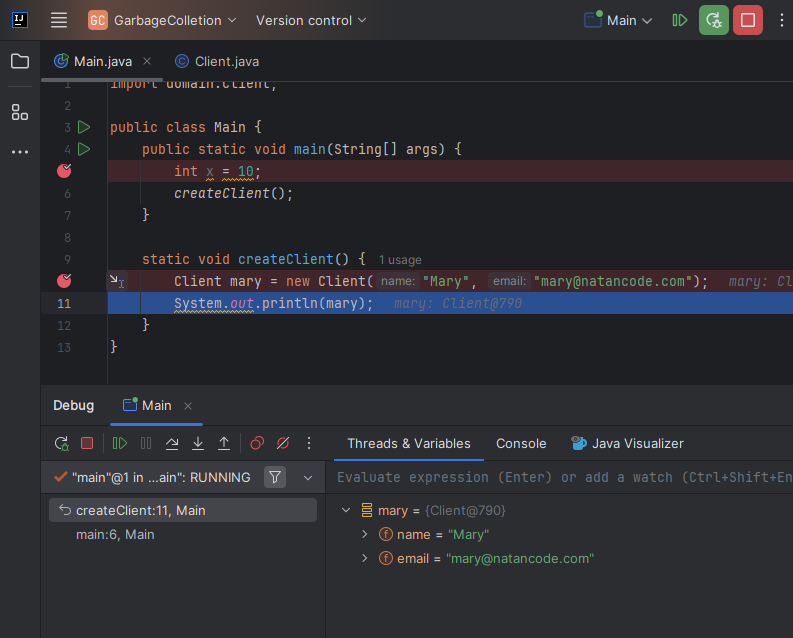
The variable mary was created within the stack memory and holds a value that is a reference to an object located in the heap memory.
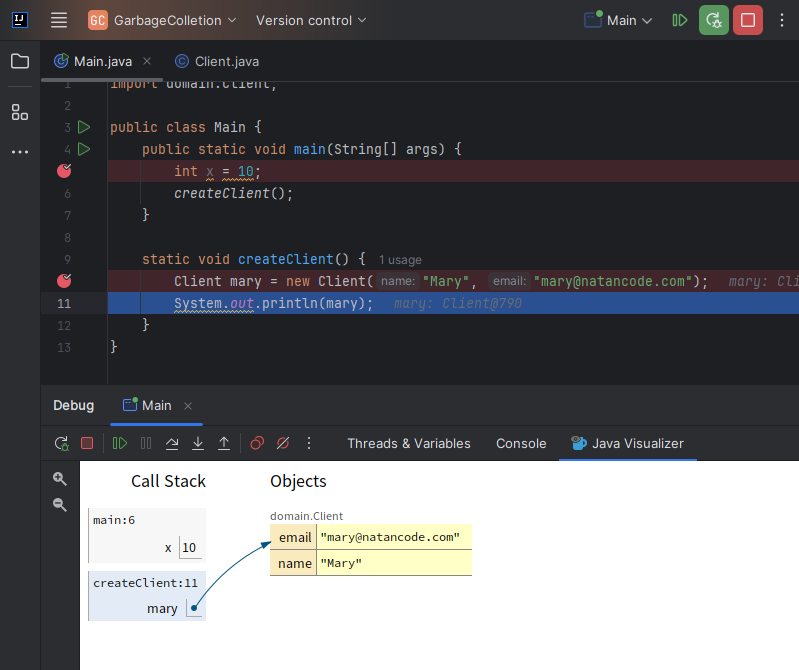
When we finish executing the createClient method, it will exit the call stack, and there will no longer be a variable pointing to the object in the heap memory. At some point, the Garbage Collector (which is responsible for carrying out the Garbage Collection process) will automatically detect this and remove the object from memory. This process is known as Garbage Collection.
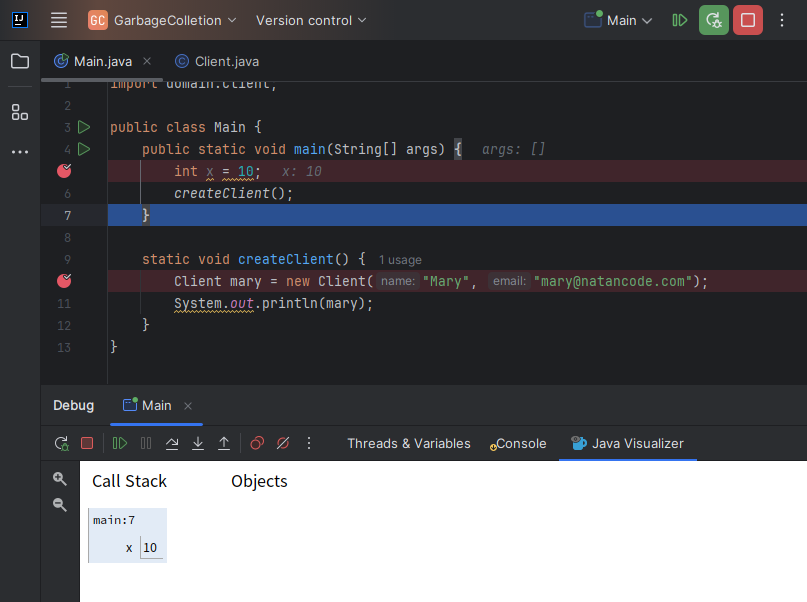

This was an example of how it works. This management is done automatically and helps prevent memory leaks.
Author
-

I am a seasoned Full Stack Software Developer with 8+ years of experience, including 6+ years specializing in Java with Spring and Quarkus. My core expertise lies in developing robust RESTful APIs integrated with Cosmos Db, MySQL, and cloud platforms like Azure and AWS. I have extensive experience designing and implementing microservices architectures, ensuring performance and reliability for high-traffic systems. In addition to backend development, I have experience with Angular to build user-friendly interfaces, leveraging my postgraduate degree in frontend web development to deliver seamless and responsive user experiences. My dedication to clean and secure code led me to present best practices to my company and clients, using tools like Sonar to ensure code quality and security. I am a critical thinker, problem solver, and team player, thriving in collaborative environments while tackling complex challenges. Beyond development, I share knowledge through my blog, NatanCode, where I write about Java, Spring, Quarkus, databases, and frontend development. My passion for learning and delivering innovative solutions drives me to excel in every project I undertake.

